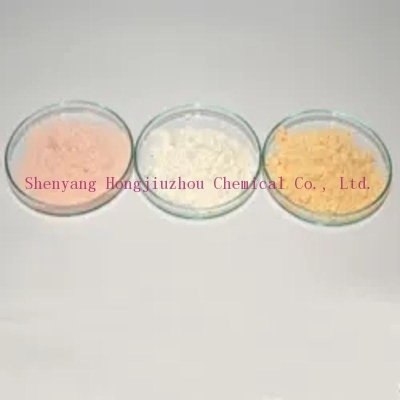-
Categories
-
Pharmaceutical Intermediates
-
Active Pharmaceutical Ingredients
-
Food Additives
- Industrial Coatings
- Agrochemicals
- Dyes and Pigments
- Surfactant
- Flavors and Fragrances
- Chemical Reagents
- Catalyst and Auxiliary
- Natural Products
- Inorganic Chemistry
-
Organic Chemistry
-
Biochemical Engineering
- Analytical Chemistry
- Cosmetic Ingredient
-
Pharmaceutical Intermediates
Promotion
ECHEMI Mall
Wholesale
Weekly Price
Exhibition
News
-
Trade Service
Plastics are the second largest user of titanium dioxide pigments, accounting for 18% to 20% of the world's total demand for titanium dioxide. The amount of titanium dioxide added to plastic varies according to its variety and application, generally between 0.5% and 5%. At present, the annual output of plastic products in more than 60 million tons, all the use of titanium dioxide about 600,000 tons
.
production of plastic products in 2018 totalled 60.4215 million tons, down from last year. Due to domestic environmental factors strictly control the amount of recycled materials, the use of recycled materials shrink, the Sino-US trade war background, processing decreased, the above factors led to a decline in the output of plastic products. The decline in the output of plastic products mainly affects the use of recycled materials, but the impact on new materials is small, the domestic supply of new materials continues to increase, domestic petrochemical and all aspects of new materials inventory has not accumulated a large number.
Titanium dioxide in plastic products, in addition to the use of its high cover, coloration and other pigments to work well, it can also improve the plastic products heat resistance, light resistance, weather resistance to protect plastic products from UV light, improve the mechanical strength and electrical properties of plastic products. It is used in almost all thermostate and thermoplastic plastics, polyolefins (mainly low-density polyethylene), polystyrene, ABS (co-polymers of acrylonitrile-butane styrene), PVC, etc. It can be mixed with resin powder dry or with liquids containing plasticizers, and some of the titanium dioxide is first made into a color mastermix through an intermediate factory before use. Therefore, the nature of titanium dioxide used in plastics is mainly required to fine particle size, uniform particle size distribution, in order to enhance the reflection of short wavelength light and make better color of plastic products. In addition, titanium dioxide pigments must have good heat resistance and high dispersion. Therefore, titanium dioxide used in plastics are generally treated with inorganic and organic envelopes, and coating systems, outdoor plastics with titanium dioxide should be redstone type, others can use sharp titanium type.
For plastic titanium dioxide powder, the particles are required to be fine and dispersed well, heat and light resistance are good, and the heating and finished products in plastic molding process are not changed in the process of sun exposure and use. Most plastics with titanium dioxide particle size is relatively fine, usually coating with titanium white powder particle size of 0.2 to 0.4 m, and plastic with titanium white powder particle size of 0.15 to 0.3 m, so that you can obtain a blue background phase, most of the resin with yellow phase or easy to yellow resin has a masking effect. And with titanium dioxide instead of Liddle powder, the consumption of white pigment can be reduced by 50% to 70%.
Ordinary type plastic titanium dioxide powder generally does not go through surface treatment, because the use of conventional hydrated aluminum oxide such inorganic coating of titanium white powder, in the relative humidity of 60%, its adsorption balance water in about 1%, when the plastic at high temperature extrusion processing, moisture evaporation will lead to smooth plastic surface air holes, this is not without Titanium white powder of the body coating, generally have to go through organic surface treatment (polyol, silane or silica), because the plastic titanium dioxide and paint with titanium white powder is different, the former is in a low polarity resin, through shear processing mixing, organic surface treatment of titanium white powder, in the appropriate mechanical shear force, can be better dispersed. Due to the high PHR of tiO
2
in the master grain, its dispersion is more important, so the surface treatment of titanium dioxide is more demanding.
With the continuous expansion of the scope of application of plastic products, many external plastic products, such as plastic doors and windows, building materials and other outdoor plastic products, weather resistance is also very high requirements, in addition to the need to use redstone titanium dioxide powder, but also need to be surface treatment, this surface treatment is generally not zinc, only silicon, aluminum, vanadium and so on. Silicon has a hydro-humidification effect, to prevent plastic high temperature extrusion due to evaporation of water and the production of pores, but the amount of these surface treatment agents is generally not too much.
When titanium dioxide is used in polyolefins (e.g. polypropylene), it sometimes yellows the plastic because titanium dioxide reacts with phenolic-based antioxidants (BHTs) in polyolefins, and proper organic surface treatment of titanium dioxide can reduce the effect of this yellowing.
In hard PVC containing lead stabilizers, titanium dioxide causes the resin to turn gray when exposed to ultraviolet light, because titanium dioxide after ultraviolet light is reduced to Ti
2
O
3
, which allows lead in lead stabilizers to be extruded, a reaction that is reversible. However, in soft PVC and the use of tin stabilizer hard PVC will not occur, the same in melamine formaldehyde resin, but also because of the resin itself reductive, coupled with the role of ultraviolet light, can also make melamine decorative plate (grey) color, if you want to use in the above materials, be sure to choose a small chemical activity of high weather-resistant gold-redstone titanium white powder.
, the quality requirements for titanium dioxide in plastic products are shown in Table 1.
source: Coatings Industry







